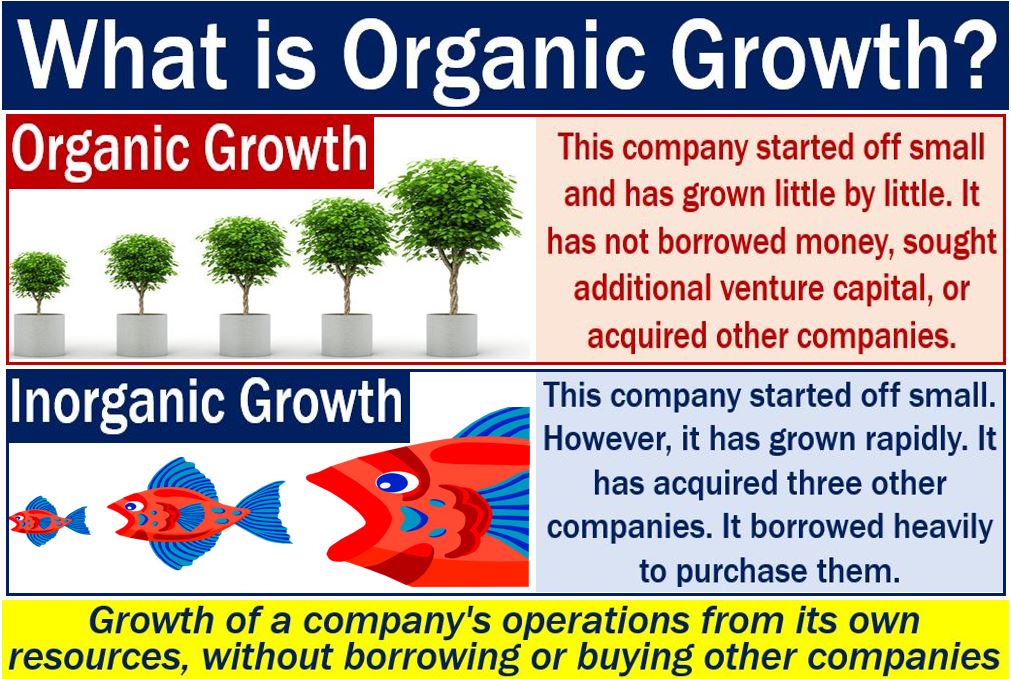Organic Growth is 100% internal growth, i.e., when a business grows thanks entirely to the effective use of its own internal resources. No outside input has been used to make the company grow.
This type of growth occurs during the early stages of a business. In other words, when it is building new markets and developing new products. Organic growth means that companies are using their resources efficiently to generate profit.
In other words, organic growth refers to growing under your own steam, rather than thanks to outside elements.
Examples include gaining new customers and boosting sales. Offering new products or services and moving into a different market, i.e., diversifying, are also examples.
Inorganic vs. organic growth
M&A is not part of organic growth. M&A stands for Mergers and Acquisitions. We do not include them because they do not involve internal efforts, i.e. the growth came from outside. We call this type of growth inorganic or external growth.
Aiming for organic growth offers several advantages. It is less risky than trying for inorganic growth. The company is also more likely to grow at a reasonable rate. Gradual and solid expansion usually means that the company’s is building fundamental business strengths.
However, organic growth can be slower to achieve than inorganic growth. Additionally, you are dependent on a healthy and vibrant market.

Organic growth – example
Let’s suppose there are two companies: Firm A and Firm B. In Firm A, growth is at 30% over a 12-month period, while in Firm B, it is at 5%.
Investors may go for Firm A because the growth rate is higher. However, after analyzing the type and reasons of growth, they may change their minds.
Firm A had to rely on inorganic growth, i.e., an acquisition, for its 30% expansion. Firm B, on the other hand, grew thanks to stronger sales.
Investors will, therefore, realize that Firm B has been making excellent use of its assets.
There is some risk when opting for organic growth. The company may use all its resources and time to grow, while another firm may opt for an inorganic growth strategy.
The company that chose external growth will develop rapidly. This may subsequently create an unbalanced competitive market.
Such rapid and seemingly easy growth may make the company forget what success is all about. In other words, it may become complacent. Complacency, in the world of business, is often the kiss of death.
If the ‘inorganic’ company forgets about improving its products or creating new ones, it will be in trouble. It may also forget about the importance of good customer service.
